There are several lobster species spread around the world, and these crustaceans inhabit every ocean, including cold water vs warm water lobsters. Different types of lobsters are found in different regions, and many of them have varying diets and lifestyles. All lobsters are crustaceans and decapods. This means they have ten legs, including the front claws that many species have.
One major aspect separating lobsters is whether they live in warm or cold water. Different water temperatures allow different types of lobsters to thrive. Lobsters found near Canada and Maine aren’t the same as those found near Australia and the Caribbean. Cold water and warm water lobsters have different diets, habitats, appearances, behaviors, and relationships with humans.
In this article, we will look at both types of lobsters to learn just how different they are and what traits they share.
Comparing Cold Water vs Warm Water Lobsters
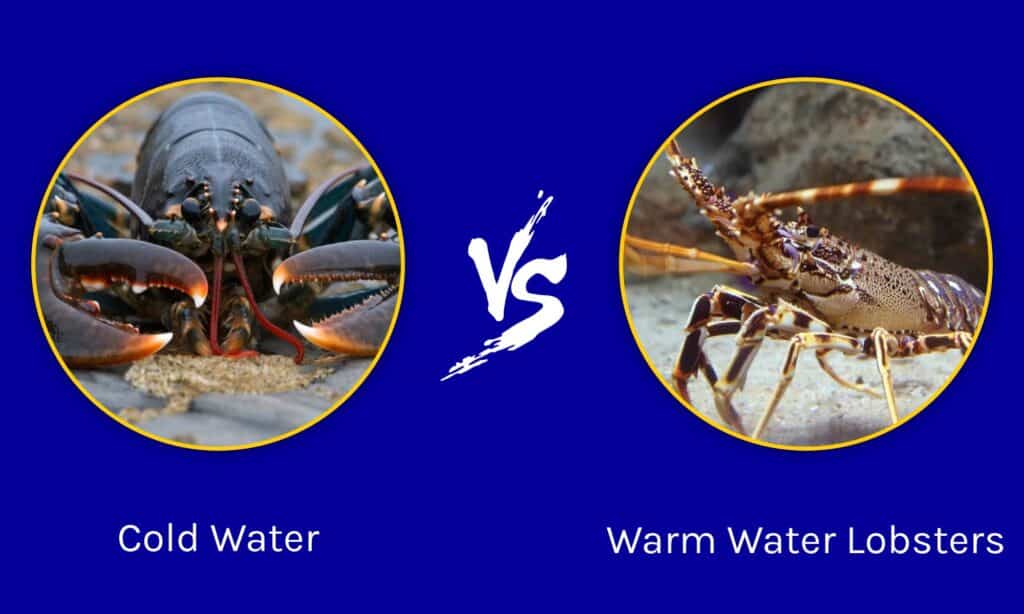
| Key Differences | Cold Water Lobsters | Warm Water Lobsters |
|---|---|---|
| Diet | Vegetation, small fish, crustaceans, clams | Vegetation, worms, fish, shrimp |
| Habitat | Eastern coast of Canada and America | South Pacific, Mediterranean, the coast of Florida |
| Lifespan | 30-50 years | 30-50 years |
| Appearance | Dark brown, black. Large front claws. | Orange or pinkish. Front antennas. |
| Predators | Humans, seals, eels | Humans, large fish, eels |
Key Differences Between Cold and Warm Water Lobsters

Cold water lobsters have harder, smoother shells compared to warm water lobsters.
©Gilmanshin/Shutterstock.com
There are many key differences between cold water and warm water lobsters. While cold water and warm water lobsters have similar traits, there are five major differences. Warm water lobsters, often referred to as spiny lobsters, don’t have the large claws of their cold-water counterparts. Warm water lobsters are more likely to hunt fish, while cold water lobsters prefer scavenging and sneaking up on prey.
Let’s talk about these differences in more detail now.
Cold Water vs Warm Water Lobsters: Appearance
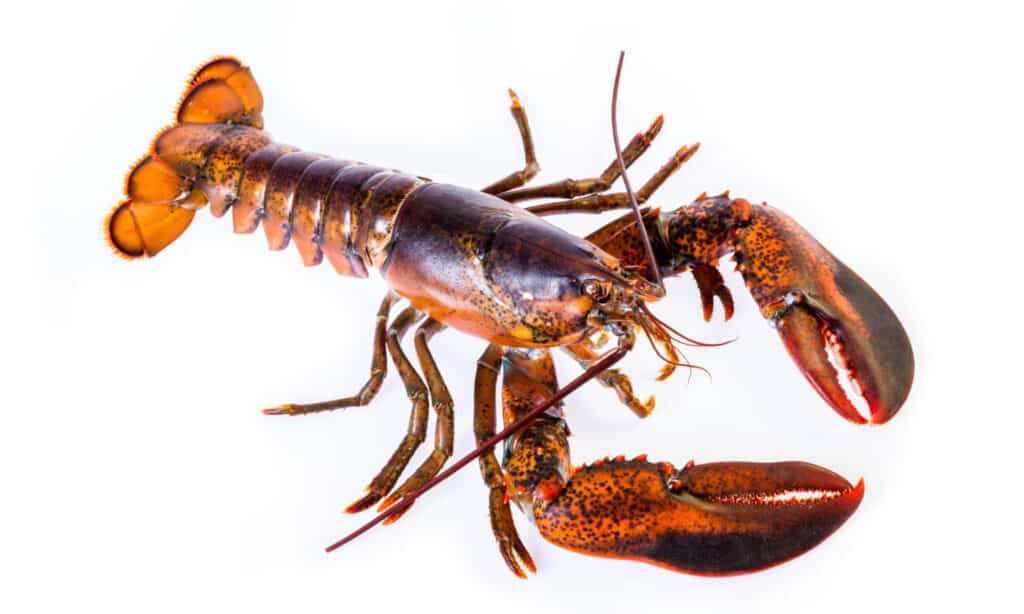
Warm water lobsters, often referred to as spiny lobsters, don’t have the large claws of their cold-water counterparts.
©LittlePerfectStock/Shutterstock.com
Cold water lobsters have been called “true” lobsters. That is because cold water lobsters are seen with the large front claws most people associate with these crustaceans. Typically, one claw will be larger than the other, and this is the main way cold water lobsters will hunt for food. Due to multiple molting sessions, cold water lobsters also have harder, smoother shells. These lobsters are usually greenish-brown or black. On average, lobsters in cold water weigh between one and four pounds.
Warm water lobsters, often referred to as spiny lobsters, don’t have the large claws of their cold-water counterparts. They have long-front antennas instead. However, both kinds of lobster have broad tails that let them swim away from danger. Warm water lobsters can be seen with orange or pink-tinted shells. Their shells aren’t as thick as cold water lobsters, which need the density to survive cold temperatures. They have spines along with their shells as a way to fend off predators.
Cold Water vs Warm Water Lobsters: Diet
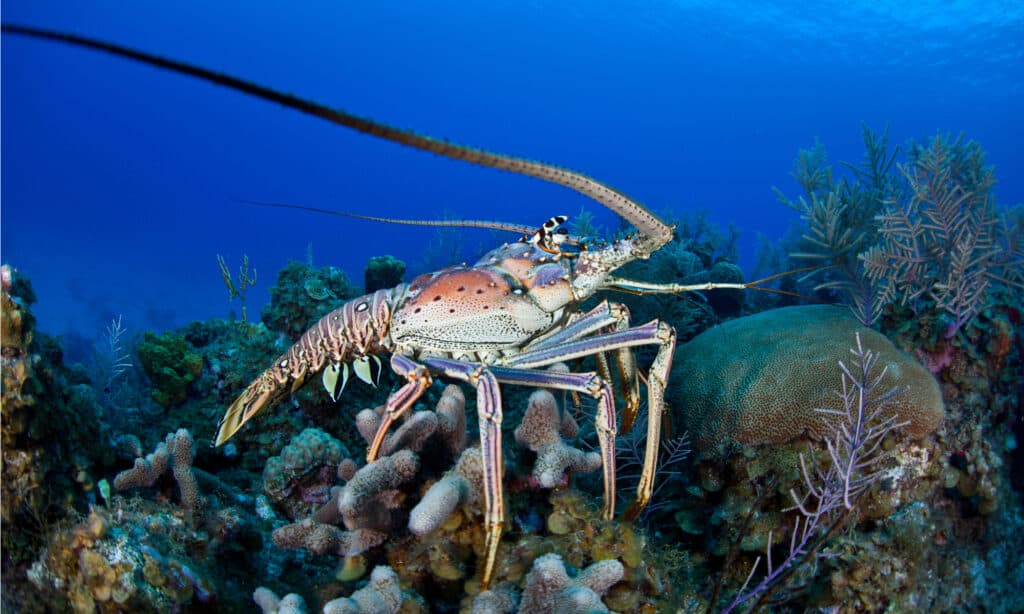
Warm water lobsters are more likely to hunt fish, while cold water lobsters prefer scavenging and sneaking up on prey.
©Ethan Daniels/Shutterstock.com
Since cold water and warm water lobsters are found in different parts of the world, their diets are slightly different. Lobsters are not picky eaters, and their diets will change based on what is available. Warm water lobsters are more likely to hunt fish, while cold water lobsters prefer scavenging and sneaking up on prey.
For the most part, every type of lobster has a similar diet. Cold water and warm water lobsters commonly eat;
- Small fish
- Worms
- Vegetation
- Other crustaceans
- Clams
In some cases, lobsters have been known to eat their own kind, but this is rare.
When it comes to predators, warm and cold water lobsters face the same major threat; humans. In areas where seafood is popular, lobster populations risk being overfished. These crustaceans have also been exposed to pollution, which has led to several diseases.
Cold Water vs Warm Water Lobsters: Habitats

Cold water lobsters thrive along the eastern coast of the United States and Canada, while warm water lobsters are found in warmer regions.
©davemhuntphotography/Shutterstock.com
A primary difference between cold water and warm water lobsters is that they live in vastly different regions around the globe. For example, Cold water lobsters thrive along the eastern coast of the United States and Canada. Most of them are found along the coasts of Maine and Canada. These cold water lobsters are some of the most harvested crustaceans in the world, and one of the most popular seafood dishes. Cold water lobsters are also commonly found along the western European coast.
Just as the name suggests, warm water lobsters live in warmer regions. They can be found off the coasts of Florida and California. Warm water lobsters also thrive in the South Pacific and Mediterranean regions. These varying regions are the main reason these types of lobsters have such different appearances.
In a 2015 study from the ICES Journal of Marine Science, researchers found that varying temperatures can have different effects on the development of lobsters. These effects were found in the early stages of larvae and were shown to have a major impact on development times.
Cold Water vs Warm Water Lobsters: Behaviors
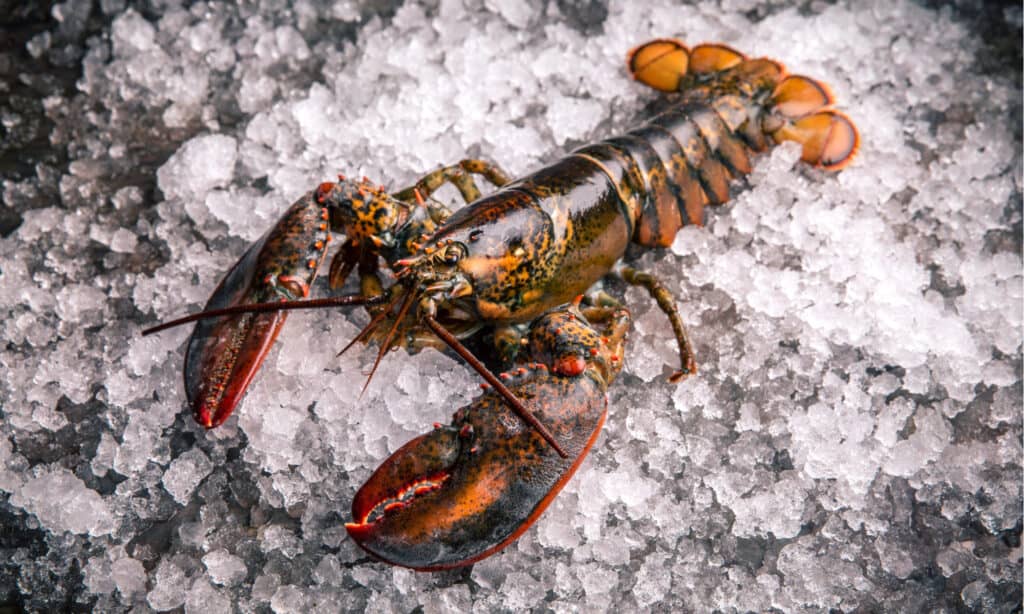
Warm water lobsters are more mobile than their cold water cousins.
©MaryLucky/Shutterstock.com
Despite having so many differences, cold water and warm water lobsters have similar behavioral patterns. For the most part, all lobsters are solitary creatures. They will create dens and burrows along the seafloor and mostly hunt at night. Adult lobsters are more likely to journey further from their dens, as they are more suited to deal with predators.
Lobsters tend to only interact with other members of their species during mating seasons. Despite spending so much time alone, lobsters have been shown to have good memories, and the ability to recognize each other.
Warm water lobsters are more mobile than their cold water cousins. They will sometimes migrate to warmer waters, and they tend to do so together. This makes them more social than cold water lobsters, but they still lead solitary lives.
When lobsters do interact for mating purposes, they tend to follow a social hierarchy. Males with higher social status will mate with more females during a given season.
Cold Water vs Warm Water Lobsters: Human Interaction
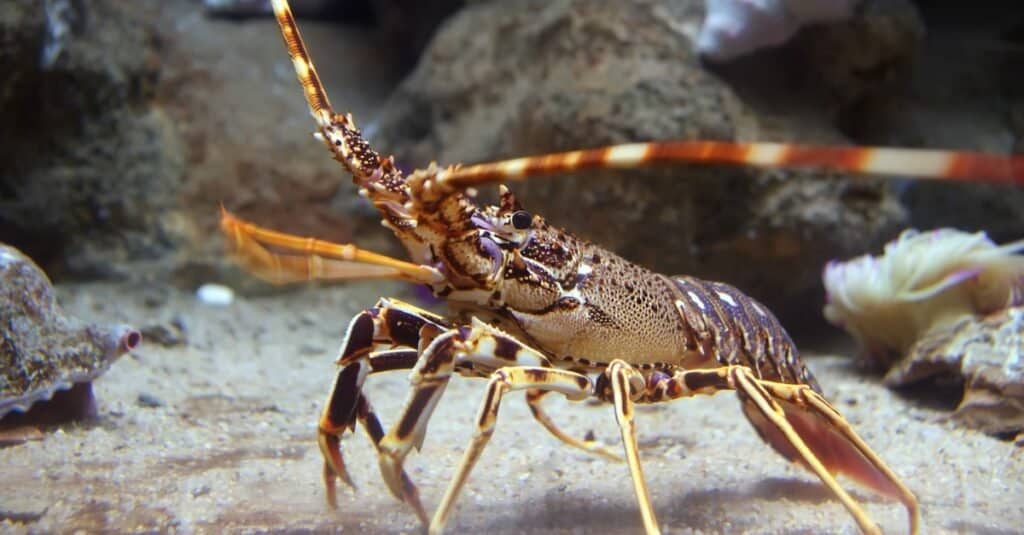
Cold water lobsters provide more meat than warm water lobsters due to how thick their shells are.
©VLADJ55/Shutterstock.com
The main way that both cold water and warm water lobsters interact with people is through the fishing industry. Lobsters are a popular seafood dish, even in places not on the coast.
Cold water lobsters provide more meat than warm water lobsters due to how thick their shells are. Maine and Canadian lobsters are some of the most commonly harvested lobsters in the world. Their meat is known for being tender and sweet.
Warm water lobsters only provide meat through their tails, which can commonly be seen lining the frozen sections of grocery stores. The meat isn’t as tender as the kind harvested from cold water lobsters, and it is said to have a fishier taste.
The photo featured at the top of this post is © LittlePerfectStock/Shutterstock.com
Thank you for reading! Have some feedback for us? Contact the AZ Animals editorial team.






